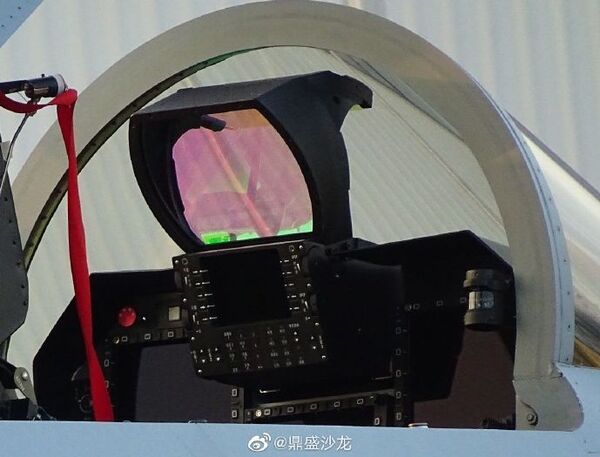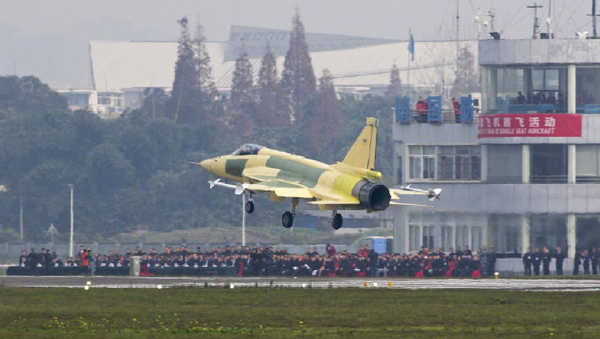The much-anticipated first flight of the JF-17 Block III prototype happened last month in Chengdu, Aerospace Knowledge magazine posted on its Sina Weibo account Tuesday.
“This prototype is equipped with a large number of AVIC's [Aviation Industry Corporation of China] shelf products, including the wide-angle diffractive holographic display, integrated cockpit display and advanced missile warning device used by the J-20 fighter aircraft, but no radar is installed,” Aerospace Knowledge wrote. However, the plane will eventually be fitted with an advanced active electronically scanned array (AESA) radar sported by only a handful of aircraft worldwide, including the J-20, Japan’s J-2 and the United States’ F-22 and F-35, as well as the F-16V “Viper” variant recently sold to Taiwan.
Photos posted on Weibo by Sina Military and Chinese military blogger Boom Salon showed the holographic heads-up display inside the cockpit.


"China has made a large amount of achievements in the development of the likes of the J-10 and J-20, resulting in many mature technologies and equipment,” Wang Ya'nan, chief editor of Aerospace Knowledge, told Global Times on Wednesday. “If they can be used on the JF-17, the pilot could enjoy a significant efficiency increase in flying, which will also boost its combat efficiency.”
With AESA, the JF-17 Block III will be able to scan the skies as well as the ground for several targets at once and at many frequencies. This gives it a significant advantage over more traditional pulse-doppler radars, which must be pointed where the pilot wishes to scan and can only scan at a single frequency, making them much easier to jam.
The high-tech jet was first introduced in 2007, the product of a joint venture between the Pakistan Aeronautical Complex (PAC) and the Chengdu Aircraft Corporation (CAC) of China. Its Chinese designation is the FC-1 Xiaolong, or “Fierce Dragon.”
As Sputnik has previously reported, the latest upgrades to the JF-17 enable Pakistan’s air force to compete directly with India’s newest fighter jet, the Tejas F-1, which also has an AESA radar. According to Aerospace Knowledge, the Pakistan Air Force plans to buy 50 of the JF-17 Block III.
The plane is also a major competitor on the international market, where it provides a cheap alternative for a capable, advanced aircraft for nations unable to afford the pricey F-35 Lightning II, which can run up to three times the price of a JF-17. The Tejas is a competitor there as well, with Malaysia saying in November 2019 both jets were under consideration for a contract Kuala Lumpur is likely to issue this year for 36 light combat aircraft.

